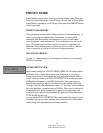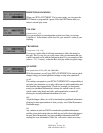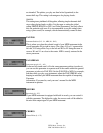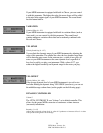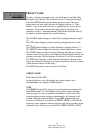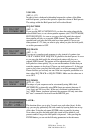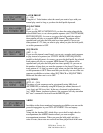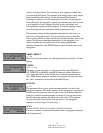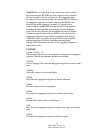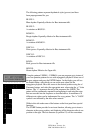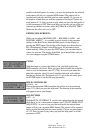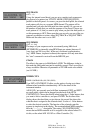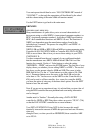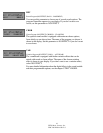
34
ZETA Music Systems, Inc.
ZMC-200 Manual Rev2.0
order as you played them. The recording of your arpeggio is ended when
you release the hold pedal. The sequence of recording notes is now played
back immediately and endlessly (on the preselected Hold channel),
allowing you to play your solo or other part above them. By pressing the
hold pedal again, the arpeggio is stopped, but simultaneously able to record
a new sequence of notes, making it possible to play and change your
accompaniment sequence without stopping. To stop the arpeggio, simply
press the hold pedal once and release without playing any notes.
The parameter settings for the arpeggiator determine how the notes you
play into it will be played back. You can control the order in which the
notes are played back, or stretch out the intervals between them into several
octaves. But the most interesting characteristic of the arpeggiator is its
ability to quantize the notes played into it into freely programmable
rhythmic patterns. Press the ENTER button to get to the Sub menu of t he
arpeggiator:
ARPEG PRESET
(1…128)
Select the sound you want to use when playing back by using the +/-Value
buttons.
TEMPO
(EXT., 41…240)
The tempo of your arpeggiator can be set externally using Midi clock
(EXT/MIDI IN) or internally using BPM (beats per minute) between 41
(very slow) and 240 (very fast). In the case of external synchronization,
(e.g.. MIDI-Drums, sequencer software) the sequence will only start when
the “start” command is received from the MIDI IN port.
LENGTH
(1…32)
This parameter allows you to set the maximum number of notes for the
arpeggiator sequence. The buffer memory of the arpeggiator is expanded to
include one more note every time you play a new one with the hold pedal
depressed, until this maximum number is reached. If you play more notes
than this maximum number, the oldest note in the series will be replaced
for every note played beyond the limit you set here. An arpeggiator
sequence can be as long as 32 notes long.
SCAN
(ASSIGN, REVERS, RECYCLE, UP, DOWN, UP/DOWN, RANDOM)
There are a number of options that determine how an arpeggiator sequence
will be played back:



